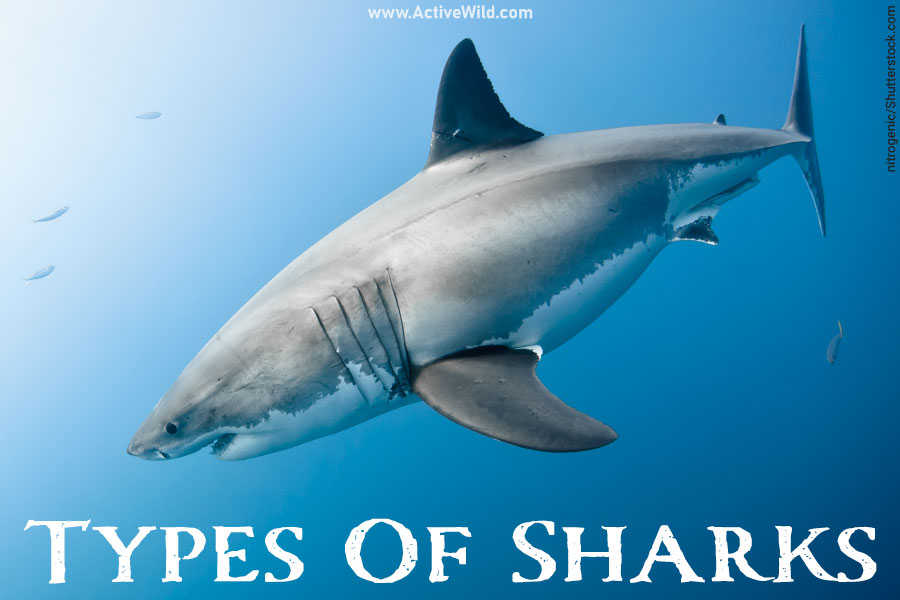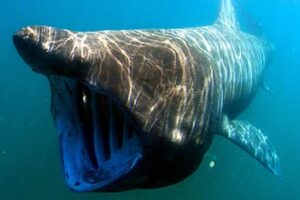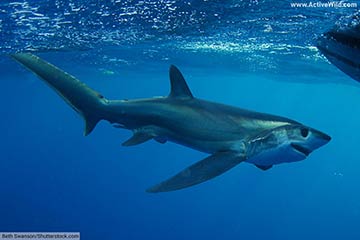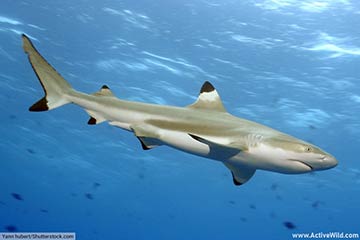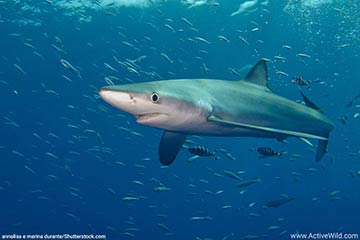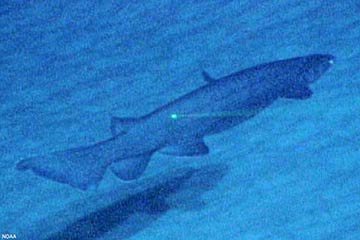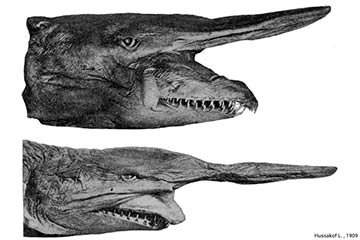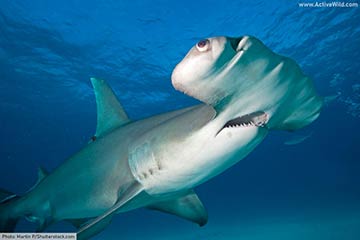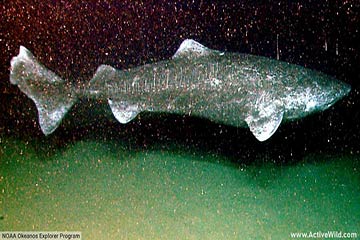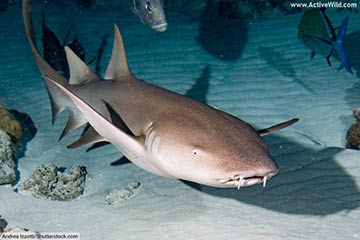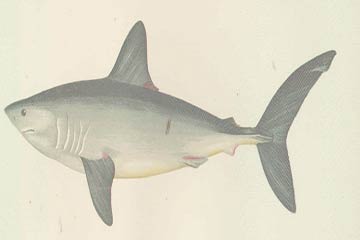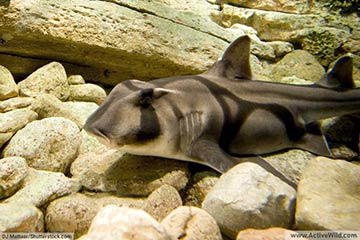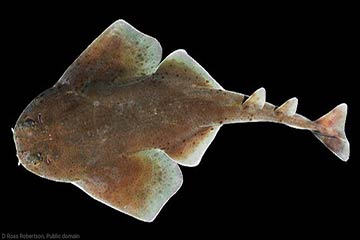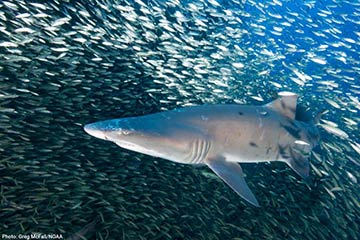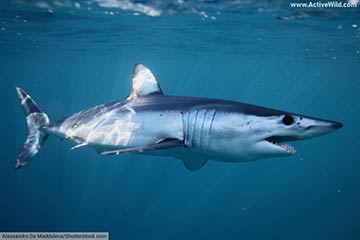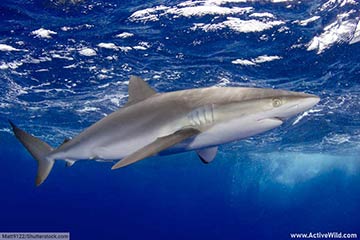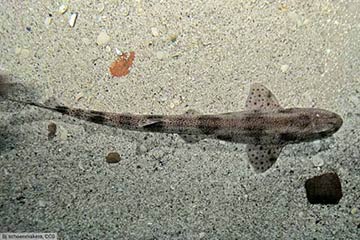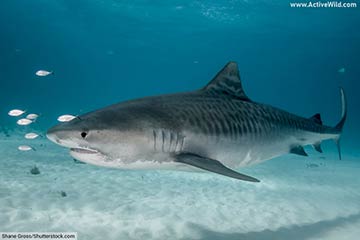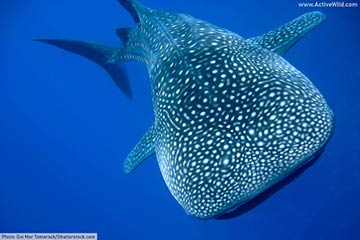Types Of Sharks
There are 537 shark species, divided between 8 orders. Famous types of sharks include requiem sharks such as the tiger shark and blue shark; mackerel sharks such as the great white shark and shortfin mako shark; carpet sharks such as the whale shark; ground sharks such as the great hammerhead, and smaller groups such as angel sharks, catsharks and dogfish.
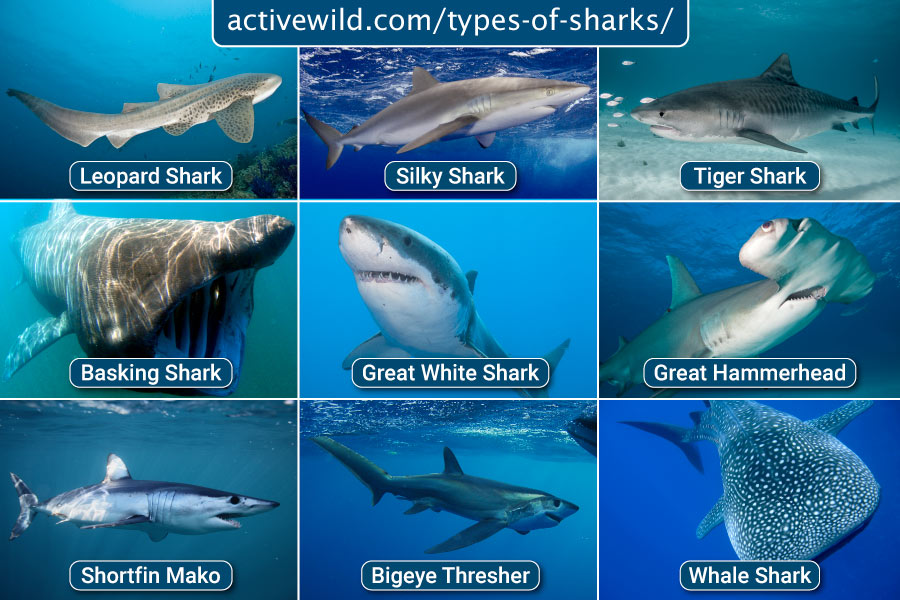
You can use the index below to find pictures and information on famous shark species from all around the world.
Shark Species Index
Click on any of the pictures below for information on a particular shark (or continue scrolling to browse all of the sharks).
Other shark pages on Active Wild:
- Shark Facts: Become A Shark Expert!
- Shark Life Cycle: How Do Sharks Reproduce?
- Do Sharks Lay Eggs?
- Is a shark a fish?
- Ocean Animals List with Pictures & Facts
- Types of Fish with Pictures & Facts
- Megalodon Facts: Discover A Fearsome Prehistoric Shark
About Sharks
Sharks belong to a group of fish known as cartilaginous fish. As the name suggests, the skeletons of sharks (and other cartilaginous fish such as rays and skates) are made not of bone, but of cartilage, a strong, yet flexible natural material.
Sharks are known as fearsome apex predators, and for many species, such as the great white shark and great hammerhead shark, this reputation is well-deserved.
These fish are supreme ocean hunters: streamlined, fast, and equipped with a “sixth sense” in the form of electroreceptors that allow them to detect the electrical charges produced by the muscles of their prey.
Shark Diversity
However, not all sharks are large apex predators. In fact, the 500+ different types of sharks are highly diverse in terms of appearance, behavior, diet and lifestyle.
Some of the biggest sharks – including the whale shark and basking shark – are not active hunters of prey. Instead, these huge animals are filter feeders – they swim with their mouths wide open, filtering tiny plankton from the seawater.
At the time of writing (Oct '22), 537 different shark species are listed in the Catalogue of Life (an online database of living things). The table below shows the eight shark orders and the number of species in each.
| Shark Order | No. of Species |
| Carcharhiniformes | 292 |
| Heterodontiformes | 9 |
| Hexanchiformes | 6 |
| Lamniformes | 16 |
| Orectolobiformes | 45 |
| Pristiophoriformes | 8 |
| Squaliformes | 137 |
| Squatiniformes | 24 |
| Total | 537 |
Endangered Sharks
Many types of sharks are endangered, often as a result of overfishing.
Many shark species are specifically targeted by fisheries, while others are caught as bycatch (i.e. they are caught accidentally, with nets or hooks meant for other species).
In the list of sharks below, the conservation status of each species has been included.
List Of Different Shark Species
Basking Shark
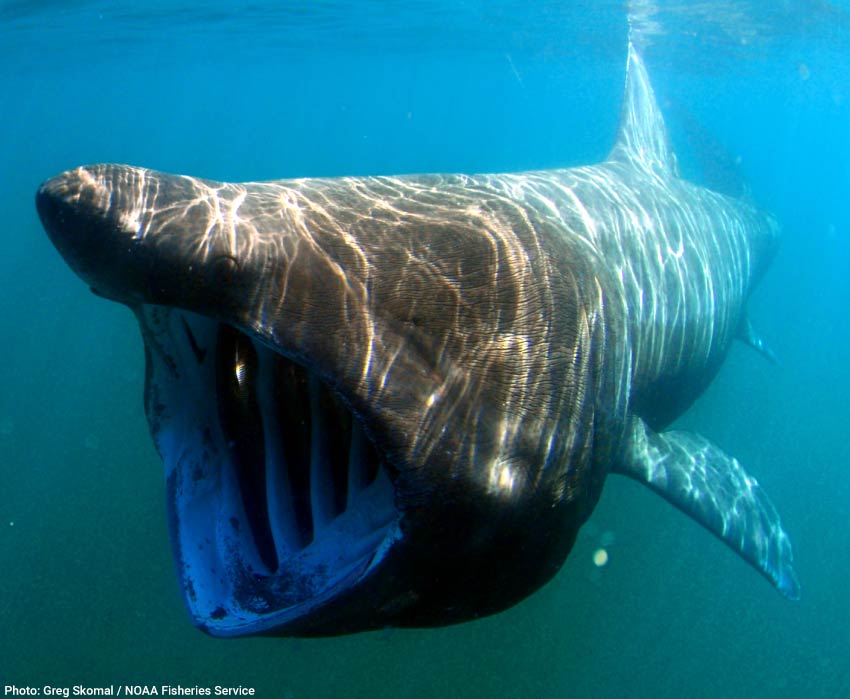
- Scientific name: Cetorhinus Maximus
- Type of shark: mackerel shark
- Order: Lamniformes
- Conservation status: Endangered
The basking shark is both the second-largest shark and the second-largest fish (the largest is the whale shark). The basking shark is typically around 26 ft. / 8 m in length, with exceptionally large specimens growing to lengths of up to 11 m / 36 ft.
Unlike most sharks, the basking shark is not an active predator. Instead, it is a filter feeder, swimming slowly through the water with its mouth held wide open. It separates food from the seawater with teeth-like projections on its gill arches.
The species is able to filter food from seawater equivalent in volume to an Olympic swimming pool every hour.
The basking shark is found in coastal and open water in temperate and tropical waters worldwide.
The species was once targeted for its meat and skin, which caused its population to decline in many areas.
Today, the basking shark is an endangered species. Despite being legally protected from hunting in many regions, the species’ population continues to decrease.
- You can find out more about the basking shark on this page: Basking Shark Facts
Bigeye Thresher Shark
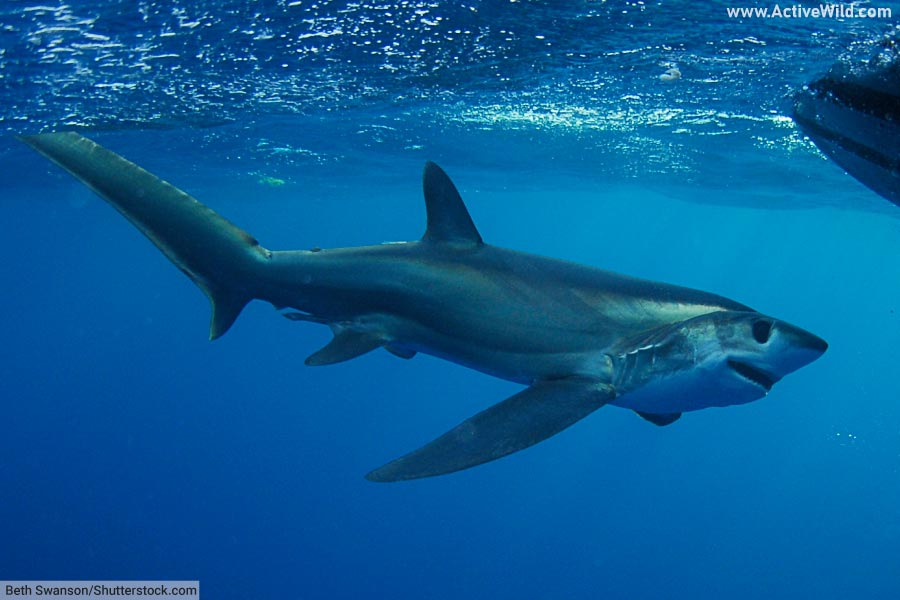
- Scientific name: Alopias superciliosus
- Type of shark: thresher shark
- Order: Lamniformes
- Conservation status: Vulnerable
The bigeye thresher shark is a large mackerel shark present in tropical and temperate waters worldwide. It is usually found in coastal waters, but may also occur in the open ocean.
The bigeye thresher shark is one of three thresher shark species (the others being the pelagic thresher and common thresher).
Thresher sharks can be identified by their distinctive tails, which have strongly elongated upper lobes. Almost half of the bigeye thresher shark’s length (which averages 12 ft / 3.6 m) consists of its elongated tail fin.
Thresher sharks also have long pectoral fins.
A distinguishing feature of the bigeye thresher shark is its large eyes, from which the species gets its name.
The thresher shark is ovoviviparous. This is a system of reproduction in which the embryos hatch from eggs while still inside the body of their mother and undergo further development before being born as live pups.
Blacktip Reef Shark
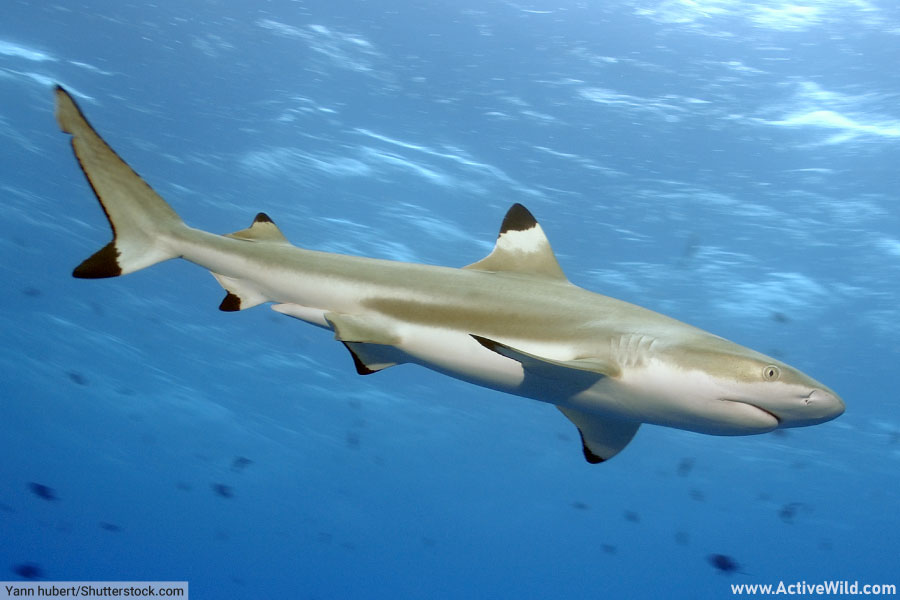
- Scientific name: Carcharhinus melanopterus
- Type of shark: requiem shark
- Order: Carcharhiniformes
- Conservation status: Vulnerable
Named for its distinctive black fin tips, the blacktip reef shark is a requiem shark found in tropical and sub-tropical waters in the Indo-Pacific (a region stretching from the Indian Ocean to the central Pacific Ocean). It is a gray-brown color and has a blunt snout. It reaches lengths of around 1.6 m / 5.25 ft. in length.
The blacktip reef shark inhabits shallow coastal waters and coral reefs, and is one of the most common sharks in coral reef habitats.
The species is an apex predator (top of the food chain, with no predators of its own), preying on small fish such as mullet, groupers and wrasses, and invertebrates such as cuttlefish, squid, octopuses and shrimps.
The blacktip reef shark should not be confused with the blacktip shark Carcharhinus limbatus – another species of requiem shark.
Blue Shark
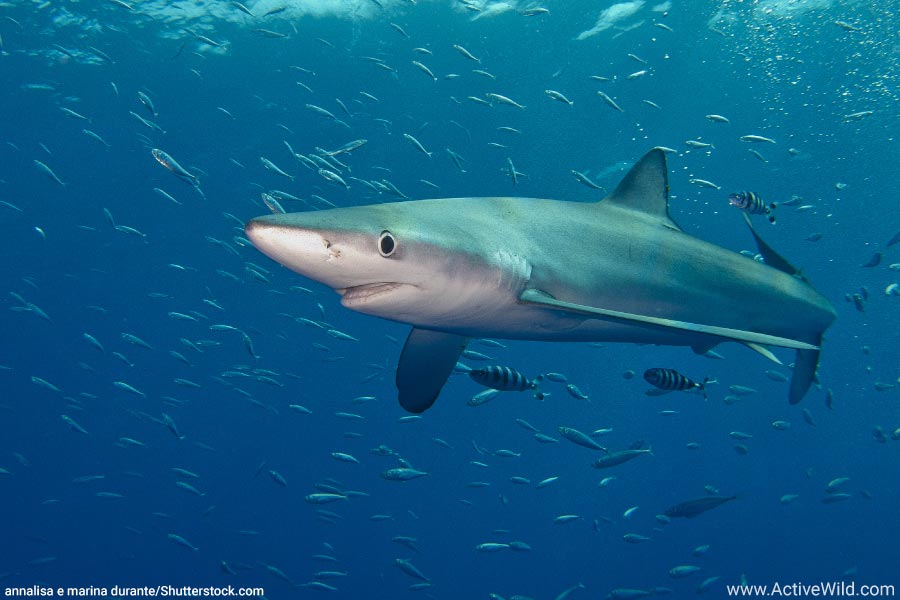
- Scientific name: Prionace glauca
- Type of shark: requiem shark
- Order: Carcharhiniformes
- Conservation status: Near Threatened
Found in temperate and tropical waters worldwide, the blue shark is a member of the requiem shark family, Carcharhinidae. This large shark typically grows to around 2.5 m / 8.2 ft, but occasionally reaches lengths of up to 3.8 m / 12 ft.
The blue shark is known for its wide range – it is found across a larger area than most other shark species and is also highly migratory, moving to different areas in search of food and suitable breeding habitats.
The courtship ritual of the blue shark involves the male biting the female. As a result, the female has evolved skin over twice as thick as the male’s.
Bull Shark
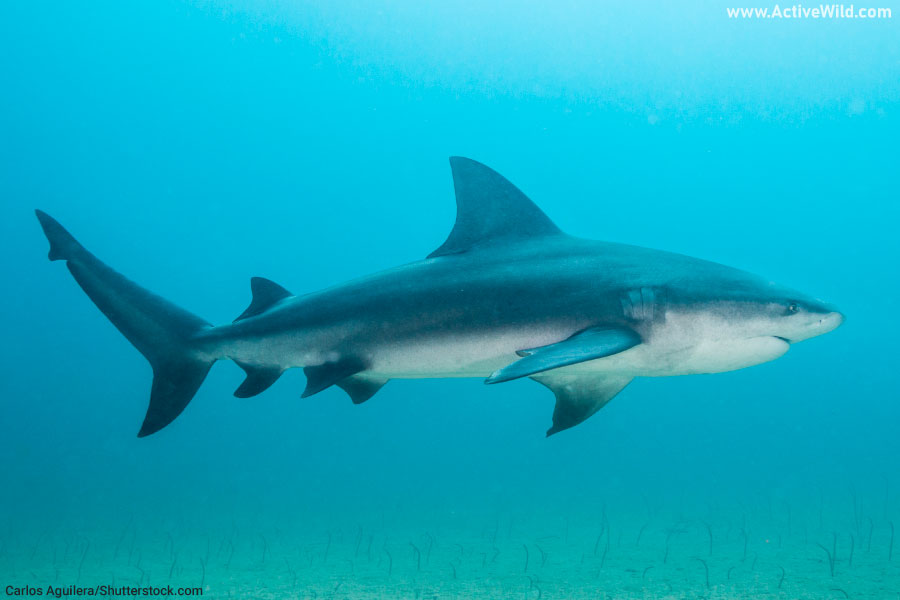
- Scientific name: Carcharhinus leucas
- Type of shark: requiem shark
- Order: Carcharhiniformes
- Conservation status: Vulnerable
The bull shark is a member of the requiem shark family, Carcharhinidae. It is found in coastal waters in tropical and warm temperate areas worldwide.
The bull shark is a large and heavily-built shark. Its average length is 2.32 m / 7.61 ft., with exceptionally-large individuals reaching lengths of 3.5 m / 11.48 ft.
Unlike most sharks, the bull shark can tolerate fresh water and will venture considerable distances upriver – the species has been found in the Amazon, Mississippi, Ganges and Zambezi rivers.
Because it is found in coastal waters and freshwater systems, the bull shark is often in close proximity to humans. This is perhaps why the species is responsible for the third-highest number of shark attacks on humans.
Frilled Shark
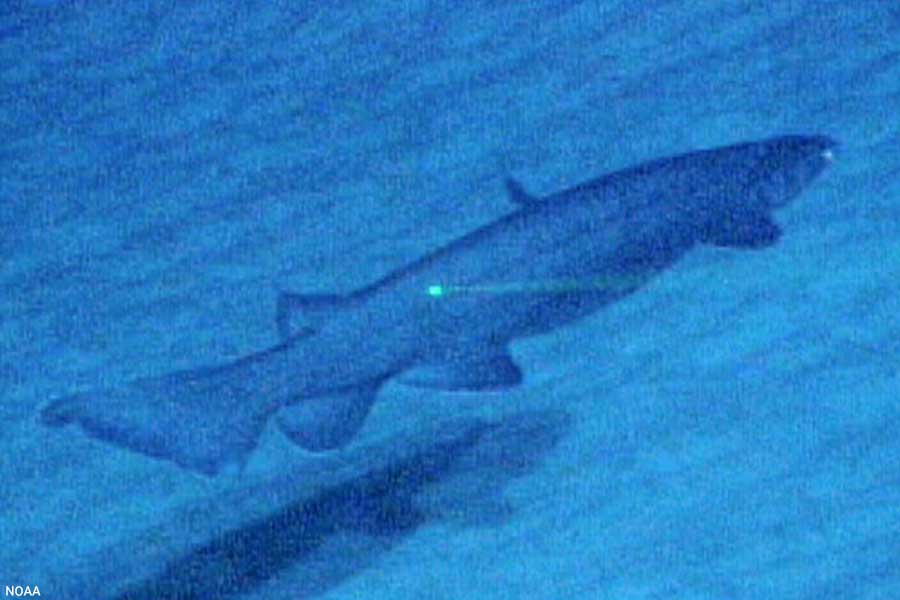
- Scientific name: Chlamydoselachus anguineus
- Order Hexanchiformes
- Conservation status: Least Concern
The frilled shark is a bizarre-looking shark with a long, eel-like body and distinctive “frilled” gill slits (from which the species gets its name). It is considered a “living fossil” due to its primitive features; species not too dissimilar to the frilled shark were swimming in the oceans of the Paleozoic Era, millions of years before the dinosaurs.
The frilled shark is dark-brown in color and grows to around 2.0 m / 6.6 ft. in length. It is patchily-distributed in the Atlantic and Pacific Oceans.
Goblin Shark
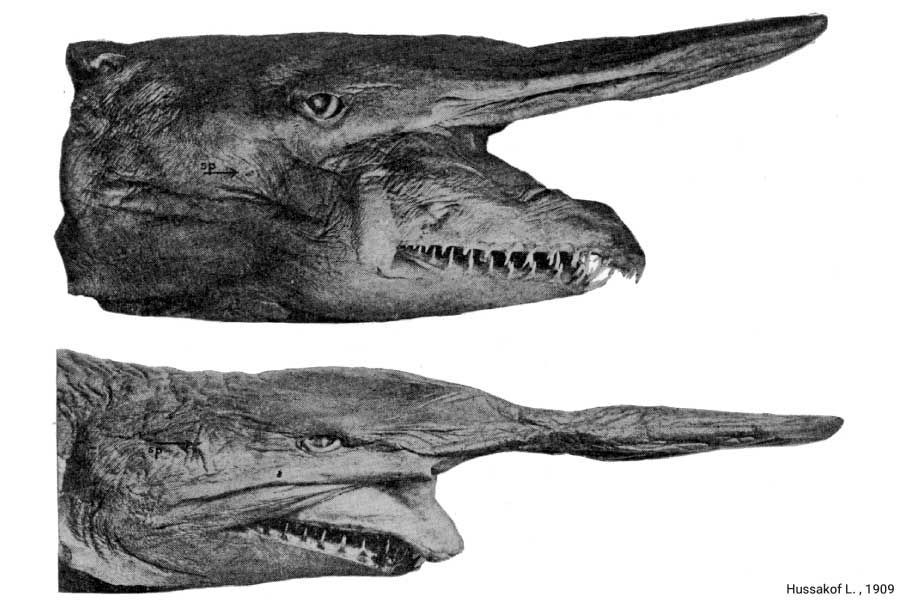
- Scientific name: Mitsukurina owstoni
- Type of shark: Mackerel shark
- Order: Lamniformes
- Conservation status: Least Concern
One of the world’s strangest types of shark is the goblin shark, a rarely-encountered, deep-sea species of mackerel shark.
This bizarre looking fish has an elongated nose and jaws that it can extend out of its mouth. Blood vessels close to the skin give the shark a pink color.
Most goblin sharks are around 13 ft. / 4 m in length, but particularly large individuals are thought to exceed 20 ft. / 6 m.
The goblin shark is found in the Pacific, Atlantic and Indian Oceans.
Little is known about the lifestyle of this mysterious fish.
Great Hammerhead Shark
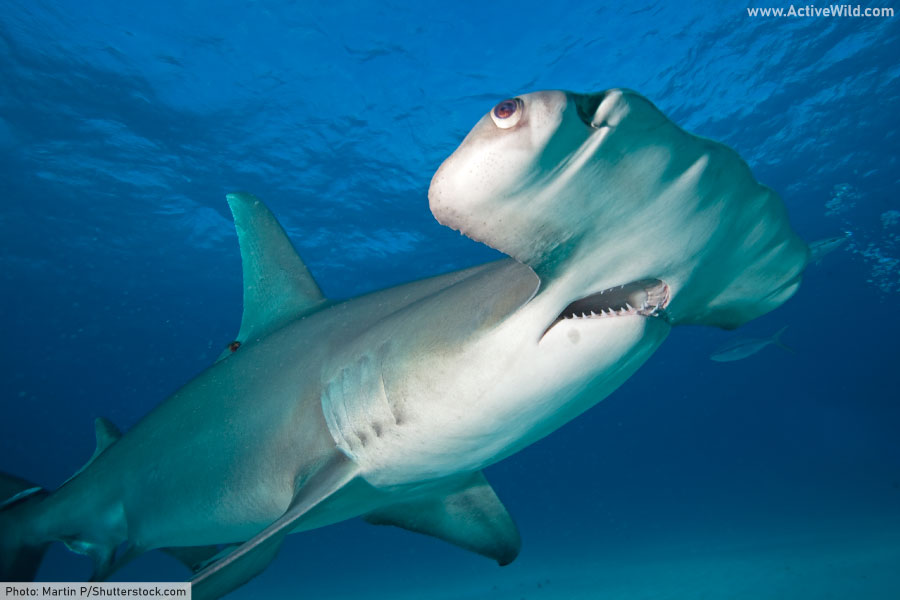
- Scientific name: Sphyrna mokarran
- Type of shark: hammerhead shark
- Order: Carcharhiniformes
- Conservation status: Critically Endangered
The great hammerhead shark is the largest member of the hammerhead shark family, Sphyrnidae. Although typically around 13.3 ft. / 4.05 m, particularly large specimens can be over 19.68 ft / 6 m in length.
Other than its size, the great hammerhead shark can be identified by the almost straight front edge of its head and the large size and sickle shape of its dorsal fin.
A hammerhead shark’s hammer-shaped head is known as a “cephalofoil”. The cephalofoil gives an improved field of vision, enabling the shark to see above and below it. The cephalofoil also provides a wide area for the shark’s electroreceptors, which may improve its ability to sense prey.
The great hammerhead shark is found in tropical waters worldwide, often near the coast. If often inhabits coral reefs.
The species is targeted by commercial fisheries and its fins are highly sought-after as an ingredient in shark-fin soup. As a result, the species is critically endangered and its population continues to decline.
- You can find out more about the great hammerhead on this page: Great Hammerhead Shark Facts
Great White Shark

- Scientific name: Carcharodon carcharias
- Type of shark: mackerel shark
- Order: Lamniformes
- Conservation status: Vulnerable
The great white shark is one of the most famous shark species due in part to its starring role in the book (and film of the same name) “Jaws”.
The species’ fearsome reputation is perhaps well-deserved – the great white shark is responsible for more attacks on humans than any other shark. That being said, great white shark attacks on humans are extremely rare and the species does not target humans (we're too bony!).
The average length of a great white shark is around 14 ft. / 4.27 m, with females being slightly larger than males. Extremely large individuals may reach lengths of over 6m / 19.68 ft., although such sizes are rare.
Great white sharks are present in temperate and warm waters worldwide. They are usually found near the coast, but are known to migrate long distances and may be found in the open ocean.
- You can find out more about the great white shark on this page: Great White Shark Facts
Greenland shark
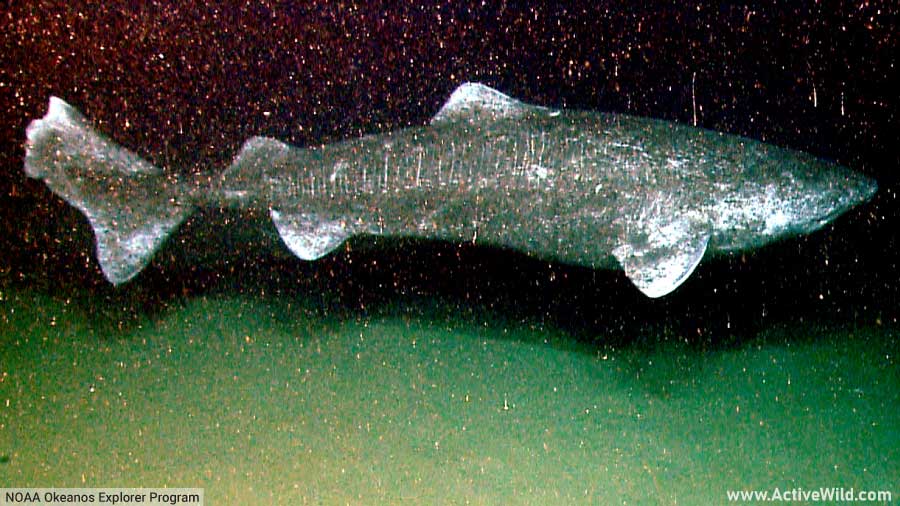
- Scientific name: Somniosus microcephalus
- Type of shark: sleeper shark
- Order: Squaliformes
- Conservation status: Vulnerable
The Greenland shark is one of the largest shark species, with some individuals reaching lengths of over 23 ft / 7 m. Most are smaller, rarely exceeding 16.4 ft / 5 m.
No other vertebrate lives as long as a Greenland shark, which has an estimated lifespan of between 250 and 500 years.
The Greenland shark is a member of the sleeper shark family, Somniosidae.
Sleeper sharks are named for their apparent lack of activity and low aggressiveness. The Greenland shark lives up to this reputation, swimming at under 1 mph / 1.61 km/h swimming speed and (for its size) beating its tail less frequently than all other fish.
Found in the cold waters of the North Atlantic and Arctic Oceans, the Greenland shark preys on a variety of fish, and on other animals such as squid and seals. It is thought that this slow-moving predator either ambushes its prey or targets sleeping prey.
- You can find out more about the Greenland shark on this page: Greenland Shark Facts
Lemon Shark
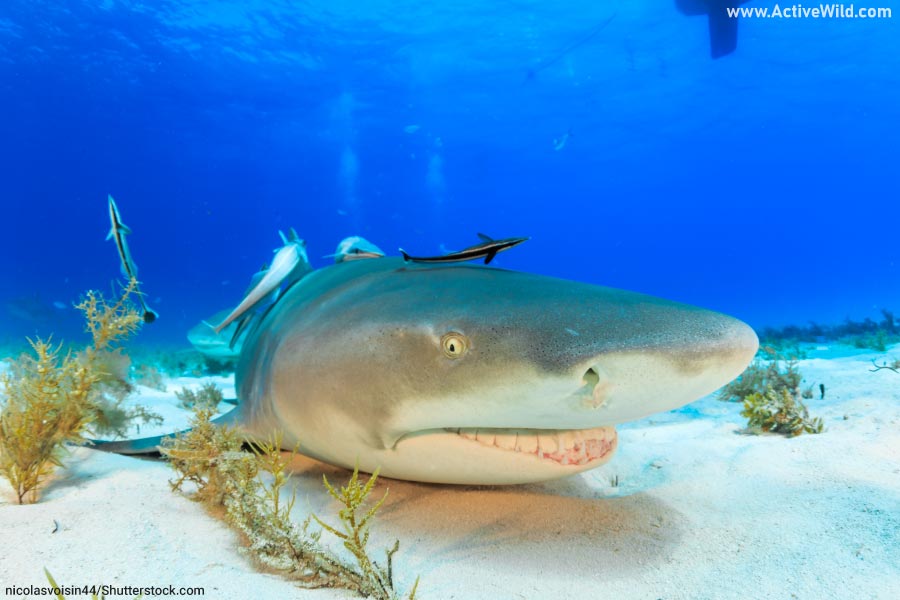
- Scientific name: Negaprion brevirostris
- Type of shark: requiem shark
- Order: Carcharhiniformes
- Conservation status: Vulnerable
The lemon shark gets its name from its yellow-gray coloration. The species is found in coastal waters in tropical areas and is present on both the Pacific and Atlantic coasts of North and South America, and also on the Atlantic coast of Africa.
The average length of a lemon shark is around 9 ft. / 2.75 m; the largest-recorded individual was 11.3 ft. / 3.43 m in length. Despite its relatively large size, attacks on humans by the lemon shark are exceptionally rare.
Typical habitats for a lemon shark include coral reefs, estuaries and mangroves. The species’ yellow coloration is thought to be camouflage against the sandy in the shallow waters in which it is found.
The lemon shark is targeted by some commercial fisheries and by recreational anglers. This, together with a decline in mangrove habitats, have resulted in the species’ vulnerable status.
Leopard Shark
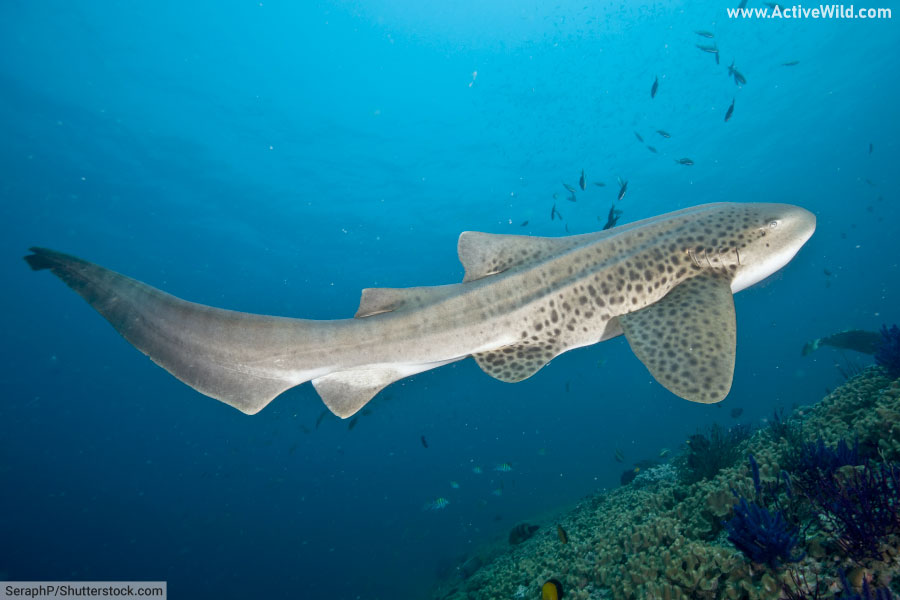
- Scientific name: Triakis semifasciata
- Type of shark: houndshark
- Order: Carcharhiniformes
- Conservation status: Least Concern
The leopard shark is one of around 40 species in the houndshark family, Triakidae. This small (average length around 4.43 ft. / 1.35 m) shark is found along the Pacific coast of North America, from Washington state to the Baja California Peninsula.
One of the most common shark species in its range, the leopard shark inhabits shallow water and is often seen swimming in large shoals in bays and estuaries.
The species is named after the dark spots and patches on its skin, which resemble the markings on a leopard’s coat.
Nurse Shark
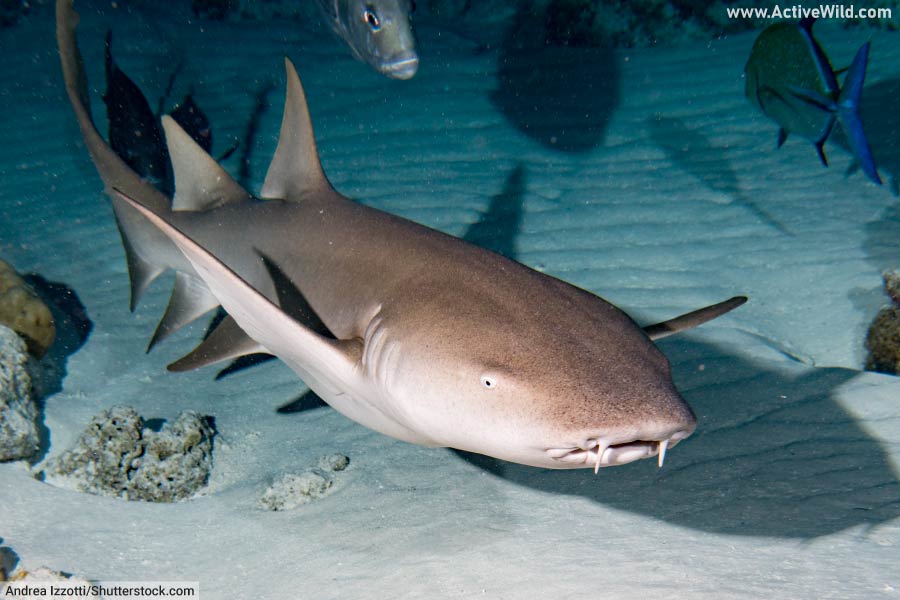
- Scientific name: Ginglymostoma cirratum
- Type of shark: carpet shark
- Order: Orectolobiformes
- Conservation status: Vulnerable
The nurse shark is the largest of the four species in the nurse shark family Ginglymostomatidae. It is grey-brown in color and around 10 ft. / 3 m in length.
Like many other carpet sharks, the nurse shark has barbels. These sensory appendages are positioned next to the nostrils above the mouth.
The nurse shark is a slow swimmer and spends much of its time resting on the sea bed. Unlike some shark species it does not need to keep moving in order to breathe.
Despite its sluggish appearance, the nurse shark will bite if threatened, and is responsible for the fourth-largest number of documented shark attacks on humans.
Porbeagle
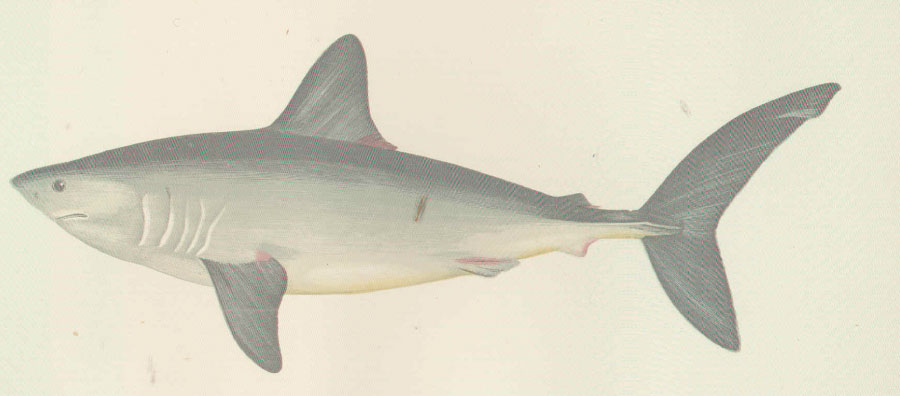
- Scientific name: Lamna nasus
- Type of shark: mackerel shark
- Order: Lamniformes
- Conservation status: Vulnerable
The porbeagle belongs to the family Lamnidae, along with four other species of mackerel sharks: the shortfin mako, longfin mako, lemon shark and great white shark.
All of the sharks in the family Lamnidae are endothermic (warm-blooded). This means that their body temperature is higher than that of their surroundings. This is thought to give them an advantage in swimming speed and endurance while hunting in deep water, and additionally, the ability to hunt in colder waters than their competitors.
The porbeagle is found in temperate and cold waters in both the northern and southern hemispheres; unlike many sharks it is absent from tropical waters. It inhabits both coastal waters and the open ocean, and is most often encountered on fishing banks – areas of relatively shallow ocean surrounded by deeper water.
A powerful and fast swimmer, the porbeagle is around 8.2 ft. / 2.5 m in length. Like other fast-swimming sharks, it has a large, sickle-shaped tail fin which resembles that of a mackerel – another fast-swimming fish.
The porbeagle can be identified by the white patch at the rear of the dorsal fin.
Port Jackson Shark
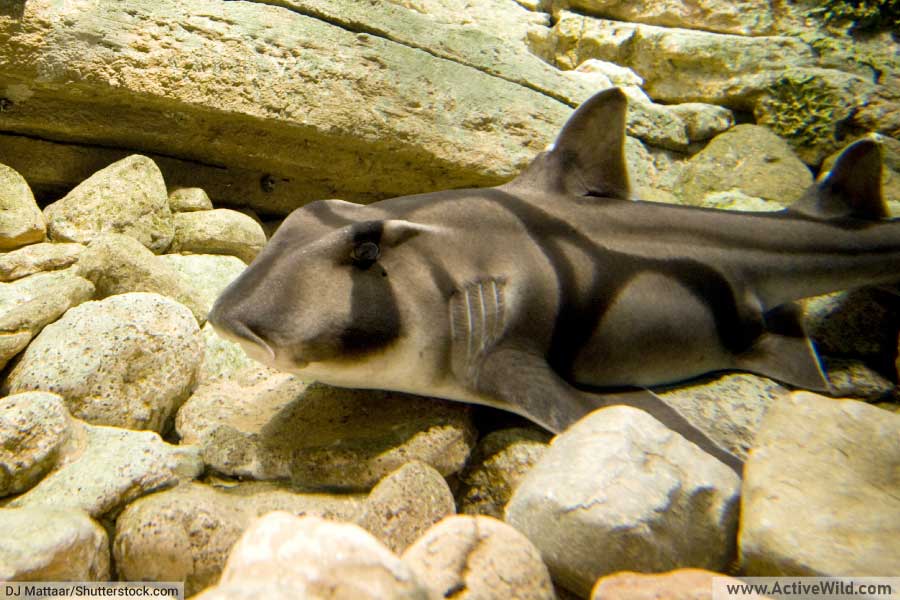
- Scientific name: Heterodontus portusjacksoni
- Type of shark: bullhead shark
- Order: Heterodontiformes
- Conservation status: Least Concern
The Port Jackson shark is a species of bullhead shark that is common in coastal waters off Australia (the species may also be present off New Zealand). It is a bottom-feeder that is most active at night.
Like other bullsharks, the Port Jackson shark has a blunt head with ridges over the eyes. It grows to a maximum length of around 1.65 m / 5.41 ft.
Unlike many other sharks, bullhead sharks lay eggs rather than giving birth to live young. Their eggs are protected in large, spiral-shaped egg cases.
Sand Devil
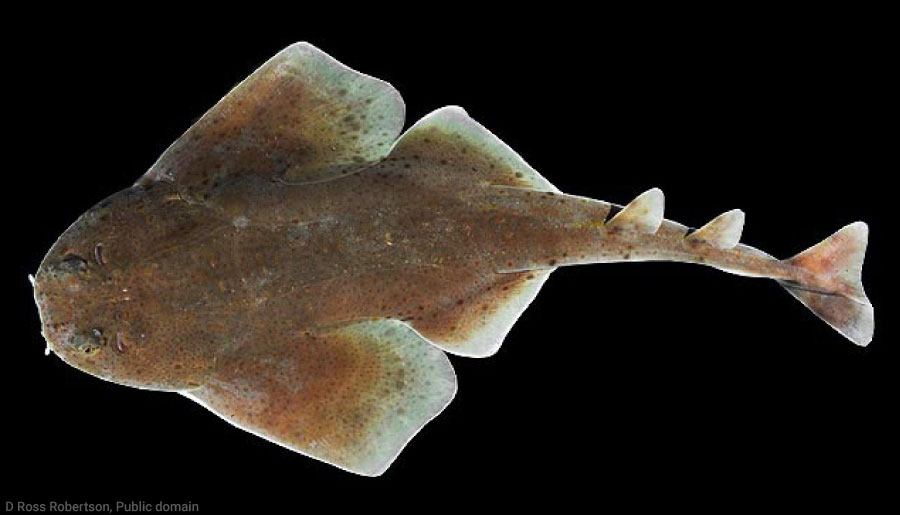
- Scientific name: Squatina dumeril
- Type of shark: Angel shark
- Order: Squatiniformes
- Conservation status: Least Concern
The sand devil is a species of angel shark found in the western Atlantic Ocean.
Angel sharks are sharks in the family Squatinidae. They have flat, ray-like bodies and spend most of their time on the sea bed.
Also known as the Atlantic angel shark, the sand devil is found on the Atlantic coastline of North America from New England south to Mexico (the species has also been reported on the northern coast of South America).
The sand devil is around 4.5 ft / 1.37 m in length and a dark brown-grey color.
Like other angel sharks, the sand devil is an ambush predator that buries itself in sand or mud and waits for suitable prey to pass overhead. It will attack humans if provoked and its sharp teeth can cause nasty injuries.
Sand Tiger Shark
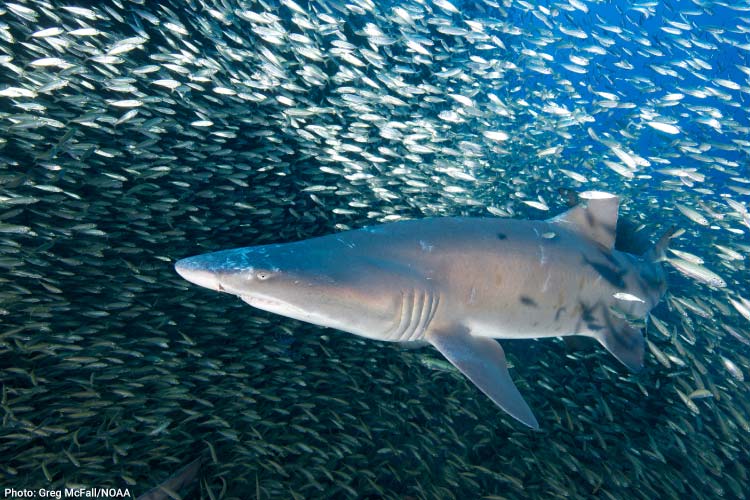
- Scientific name: Carcharias taurus
- Type of shark: sand shark
- Order: Lamniformes
- Conservation status: Critically Endangered
The sand tiger shark is found in coastal waters in subtropical and temperate regions worldwide. Its diet consists mainly of fish (including other sharks), which it hunts near the sea bed.
The species can be identified by its pointed, conical snout. It swims with its mouth open and its thin, pointed teeth are always visible.
The typical length of a sand tiger shark is 8.5 ft / 2.6 m, although the species can reach lengths of over 10.5 ft / 3.2 m.
Despite its relatively large size and toothy appearance, the sand tiger shark rarely bothers humans.
The sand tiger shark gives birth to live young. Before being born, the strongest sibling will eat the other embryos in the uterus – a behavior known as “intrauterine cannibalism”. Because a female sand tiger shark possesses two uteri, only two young are born per pregnancy.
The sand tiger shark is a member of the sand shark family, Odontaspididae. This small family contains three species, and is part of order Lamniformes, whose members are known as mackerel sharks.
The sand tiger shark is Critically Endangered, mainly as a result of overfishing. Even today the species is targeted and caught as bycatch by commercial fisheries in several parts of the world.
Shortfin Mako Shark
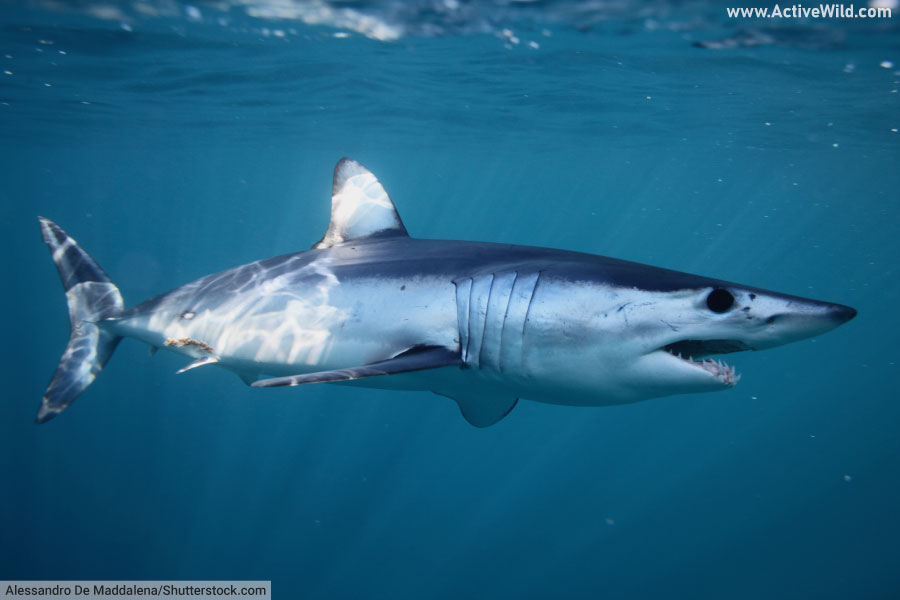
- Scientific name: Isurus oxyrinchus
- Type of shark: Mackerel shark
- Order: Lamniformes
- Conservation status: Endangered
The shortfin mako shark is one of two mako shark species (the other being the much less common longfin mako shark). Both are members of the family Lamnidae, which also contains the great white shark.
The shortfin mako shark is around 3.2 m / 10.5 ft. in length. It has a cylindrical, streamlined body with a crescent-shaped tail. Its pectoral (side) fins are shorter in length than those of the longfin mako.
Mako sharks are among the fastest-swimming of all sharks, capable of reaching speeds of up to 19 mph / 32 km/h.
Both mako shark species (together with other members of the family Lamnidae) are able to keep their blood temperature higher than the water in which they swim. Being warm-blooded is thought to help them to swim faster than their cold-blooded prey.
The shortfin mako is endangered due to overfishing. The species is both targeted and caught as bycatch by commercial fisheries.
Due to its high speed, the mako is much sought-after by sport fisherman. Sadly, even after being caught and released, around one in ten shortfin mako sharks die.
Silky Shark
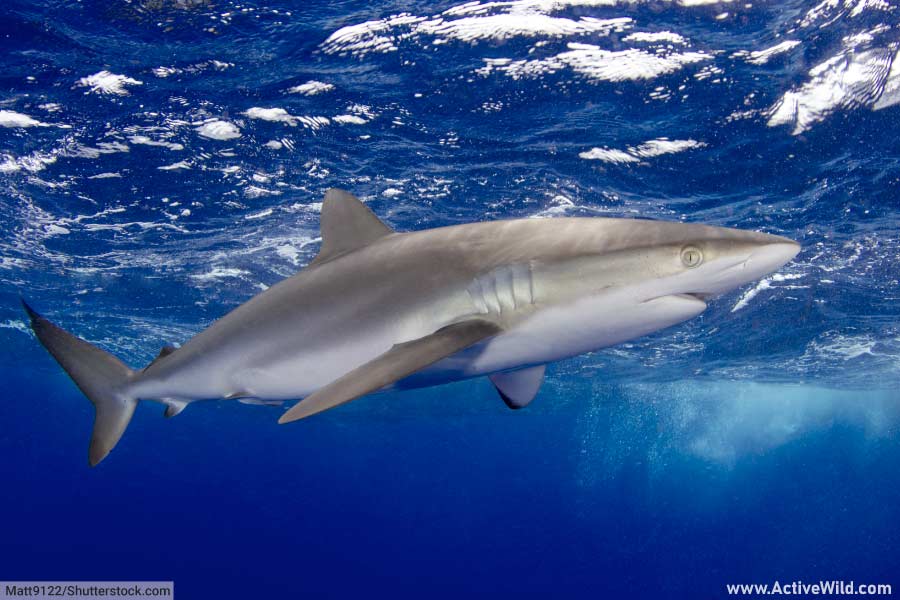
- Scientific name: Carcharhinus falciformis
- Type of shark: requiem shark
- Order: Carcharhiniformes
- Conservation status: Vulnerable
The silky shark is a member of the requiem shark family, Carcharhinidae. It is usually found away from land in tropical waters worldwide, but will also venture into coastal waters. It is one of three shark species most often encountered in the open ocean (the others being the blue shark and oceanic whitetip shark)
Named for its smooth skin, the silky shark has a streamlined body and can be identified by its small front dorsal fin and tiny rear dorsal fin. It is around 2.5 m / 8.2 ft. in length.
Small-Spotted Catshark
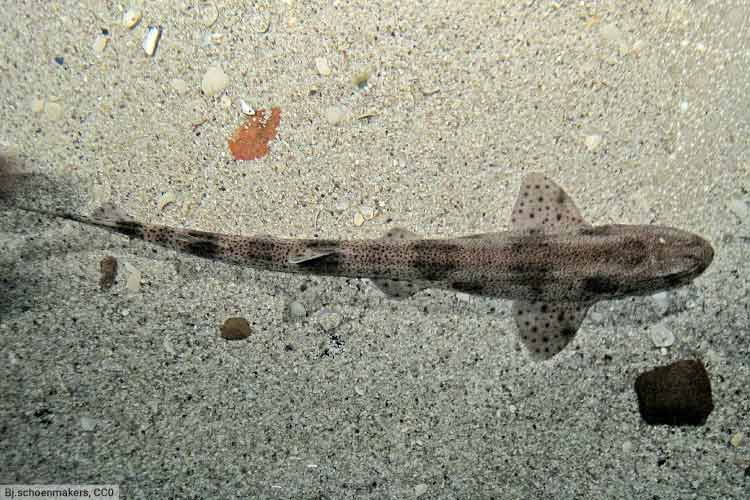
- Scientific name: Scyliorhinus canicula
- Type of shark: catshark
- Order: Carcharhiniformes
- Conservation status: Least Concern
The small-spotted catshark is a member of the catshark family Scyliorhinidae, which is part of the larger shark group, the order Carcharhiniformes (whose members are also known as ground sharks).
This small shark lives in coastal waters around Europe and northern Africa, where it is one of the most common shark species. It grows to around 1 m / 3.28 ft. in length and is grey-brown in color, with pale undersides. It reproduces by laying eggs known as “mermaid’s purses”.
Like other catsharks, the small-spotted catshark has elongated eyes that resemble those of a real cat.
Confusingly, some catsharks (e.g., the chain dogfish Scyliorhinus rotifer) are known as dogfish!
Spiny Dogfish
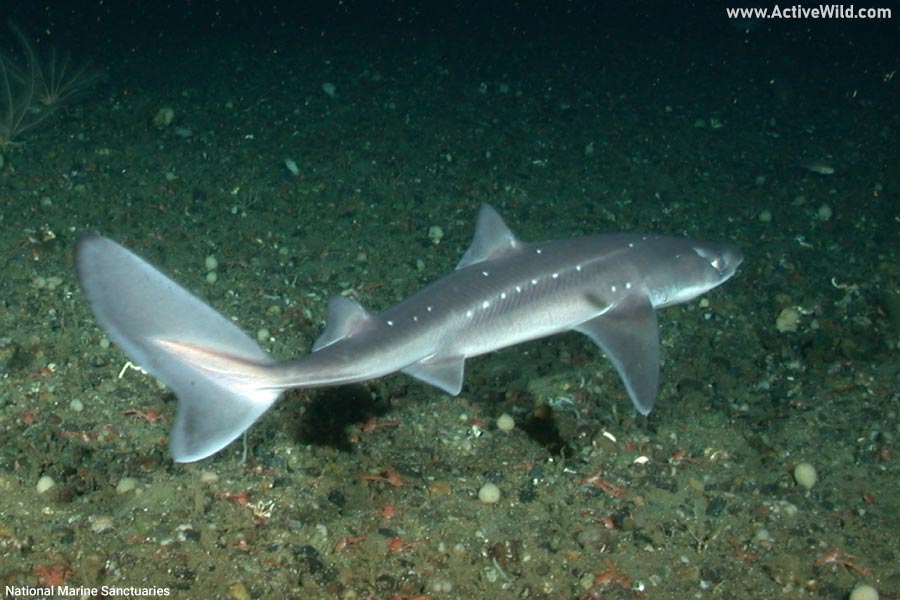
- Scientific name: Squalus acanthias
- Type of shark: dogfish
- Order: Squaliformes
- Conservation status: Vulnerable
The spiny dogfish is a shark in the dogfish family, Squalidae, which is part of the order Squaliformes. Like other dogfish, each of its two dorsal (back) fins are equipped with spines.
The species is gray-brown in color and has an average length of 1.09 m / 3.58 ft. As is the case with most sharks, females are larger than males.
The spiny dogfish inhabits continental shelves and slopes (the areas of shallow water surrounding land, and the areas that descend to deeper waters respectively). The species is found in many parts of the world and is hunted for food primarily in Europe.
In England, the species is one of the species traditionally served in fish and chip shops, and is known as “huss” or “rock salmon”.
One spiny dogfish was tagged in the USA and later found in Japan after having migrated 5,000 miles (8,000 km).
The spiny dogfish lives even longer than most other sharks (which are, in general, long-lived animals). It has a lifespan of around 70 years, and possibly as long as 100 years.
Tiger Shark
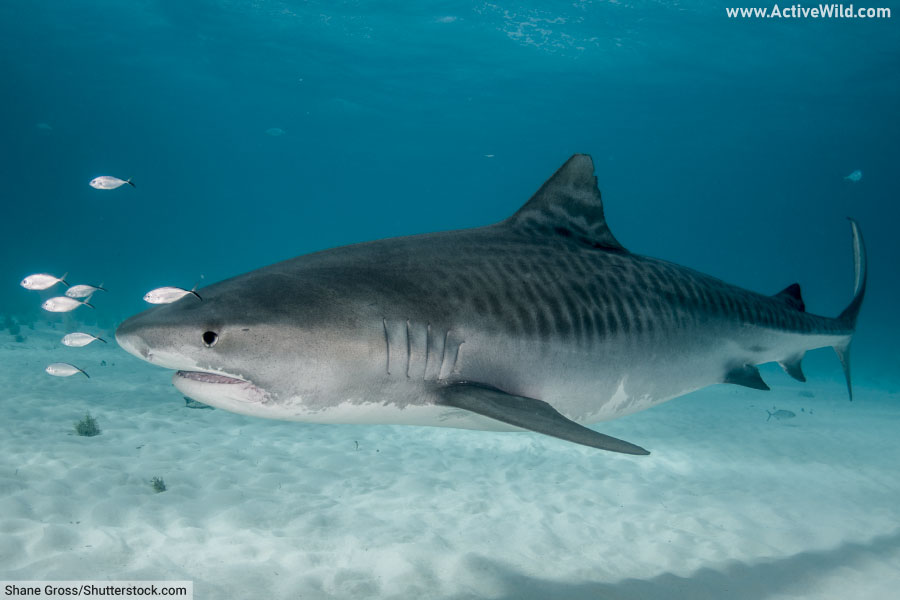
- Scientific name: Galeocerdo cuvier
- Type of shark: requiem shark
- Order: Carcharhiniformes
- Conservation status: Near Threatened
The tiger shark is a large requiem shark found in tropical and temperate waters all around the world. It typically inhabits shelves (the areas of shallow water surrounding land masses) and reefs.
The tiger shark gets its name from the tiger-like stripes on its body. These fade as the shark reaches maturity.
After the great white shark, the tiger shark is responsible for the greatest number of fatal shark attacks on humans.
This streamlined ocean predator can reach lengths of 5 m / 16.4 ft., but is typically around 3.75 m / 12.3 m in length.
The tiger shark is both targeted and caught as bycatch by commercial fisheries in many parts of the world. Its population is declining and its conservation status is Near Threatened.
- You can find out more about the tiger shark on this page: Tiger Shark Facts
Whale Shark
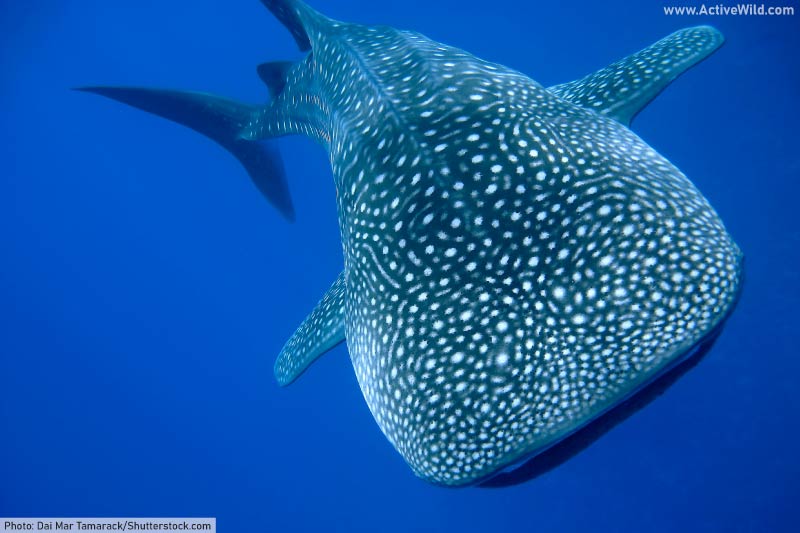
- Scientific name: Rhincodon typus
- Type of shark: carpet shark
- Order: Orectolobiformes
- Conservation status: Endangered
The whale shark is not only the world’s largest shark, it is also the world’s largest fish. This ocean giant grows to lengths of around 12 m / 40 ft, with some individuals exceeding 18 m / 59 ft.
The whale shark is the largest animal that is not a cetacean. (Cetaceans are animals such as whales, dolphins and porpoises.)
The species’ name comes from its resemblance to whales, both in size and in behavior – unlike most sharks, the whale shark is a filter feeder that feeds on plankton.
The whale shark is found in tropical and warm waters in most parts of the world, but is not present in the Mediterranean. Despite its endangered status and declining population, the whale shark is still hunted in China and other countries.
- You can find out more about the whale shark on this page: Whale Shark Facts
Whitetip Reef Shark
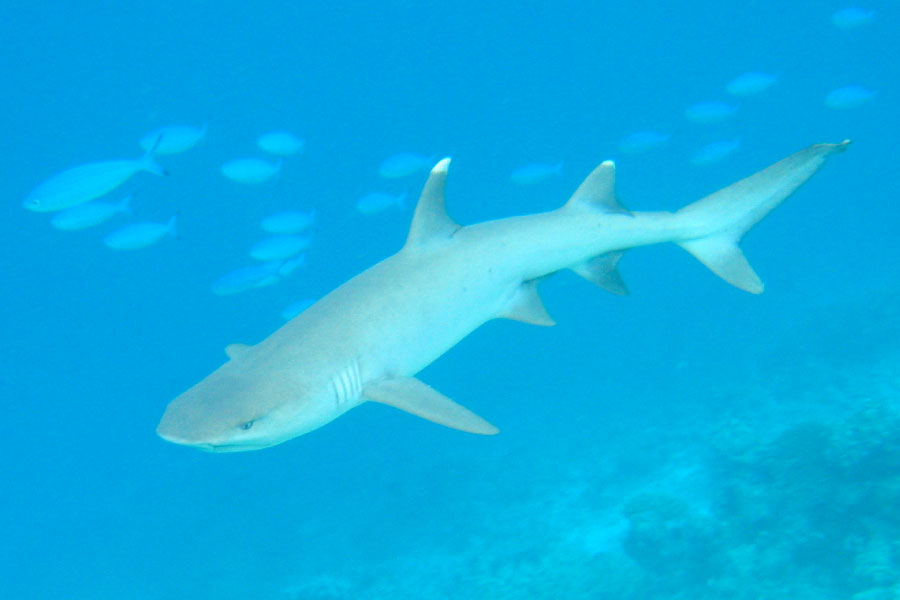
- Scientific name: Triaenodon obesus
- Type of shark: requiem shark
- Order: Carcharhiniformes
- Conservation status: Vulnerable
The whitetip reef shark is named after the white tips of its dorsal and tail fins. It is a small species of requiem shark that is typically around 5.3 ft. / 1.6 m in length.
As its name suggests, the whitetip reef shark inhabits coral reefs, and is also present over shelves and around islands. It prefers very clear water.
The species is found throughout the Indo-Pacific (a region stretching from the Indian Ocean to the central Pacific Ocean).
The whitetip reef shark is nocturnal, spending the daylight hours resting either in caves or on the sea bed. It often rests communally, with groups of whitetip sharks lying parallel to one another or even on top of one another.
At night, the species hunts on the sea bed, feeding on fish, octopuses, and crustaceans.
Unlike other requiem sharks, the whitetip reef shark does not need to keep moving in order to breathe.
This species should not be confused with the oceanic whitetip shark (Carcharhinus longimanus), which is a requiem shark species usually found in the open ocean.

